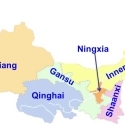An Introduction to Tibet
To the north of the Himalayas within the Chinese borders, lies the Tibet Autonomous Region of China - the Roof of the World, with an area of 1,202,230 square kilometers and a population of 3.08 million in2014, of whom 95% are Tibetans. It is the highest plateau in the world, with an average elevation of 4,000 m, and Lhasa is its capital city.
Climate
Tibet enjoys rich solar radiation, adequate rainfall and tremendous fresh water resources. The weather conditions are suitable for growth of a number of highland crops such as wheat, barley, rape, and corn. Extremely hot or cold weather is absent in most of the agricultural area in Tibet as the average temperature in July and the lowest temperatures in winter are between -10 to 16 0C. There is a great difference in day and night temperatures, favorable to the photosynthesis and yield of crops. Tibet receives ample heat and thus annual sunny days in Lhasa and Rikezhe are 2,939 to 3,249 hrs.
Cultivated land
Tibet has a land area of 1,228,400 sq. km, consisting of 348,900 ha of cultivated land and 64.62 million ha of grassland. The farmland per capita is 1.13 ha, mainly distributed in the middle and lower reaches of Brahmaputra.
Table 1 Cultivated land distributions at different elevations in Tibet
Elevation (m) | % of total cultivated land (%) | Comments |
<2,500 | 5.6 | The cultivated land distributed from 610 to 4,795 m, the highest farming land in the world. |
2,500-3,500 | 11.4 | |
3,500-4,100 | 60.8 | |
>4,100 | 22.2 | No crop, animal stock only |
Crops
In 2011 the sowing area for various agricultural crops was 244,000 ha. The major crops cultivated include spring/winter wheat, spring/winter barley, rapeseed, pea, potato and different greenhouse vegetables. In the areas with lower elevations, rice, corn, soybean and some other crops are cultivated.
Fertilizer consumption
In 2011 the total fertilization consumption in Tibet was 48,000 t (of nutrient) with an application rate of 197 kg/ha of sowing area. Of the fertilizers consumed, there were 15,000 t of N, 12,000 t of P2O5, 5,000 t of K2O, and 16,000 t of compound fertilizers. This gives a N: P2O5: K2O:compound fertilizer ratio of 1:0.80: 0.33:0.1.07, indicating low fertilizer rate per unit sowing area and overweighed P proportion in the fertilizers consumption. This should be seriously taken into consideration in future nutrient management in the region, especially in fertilizer recommendations and decision-making for fertilizers import.


